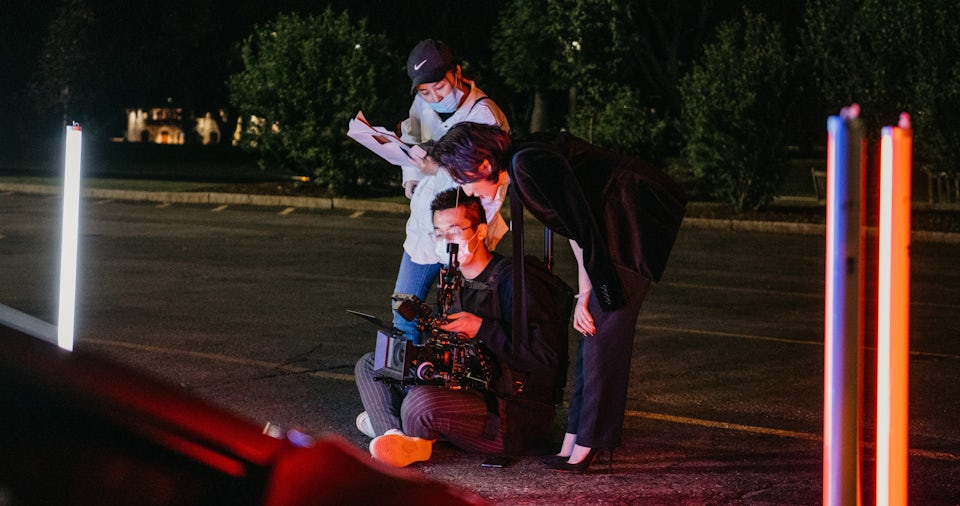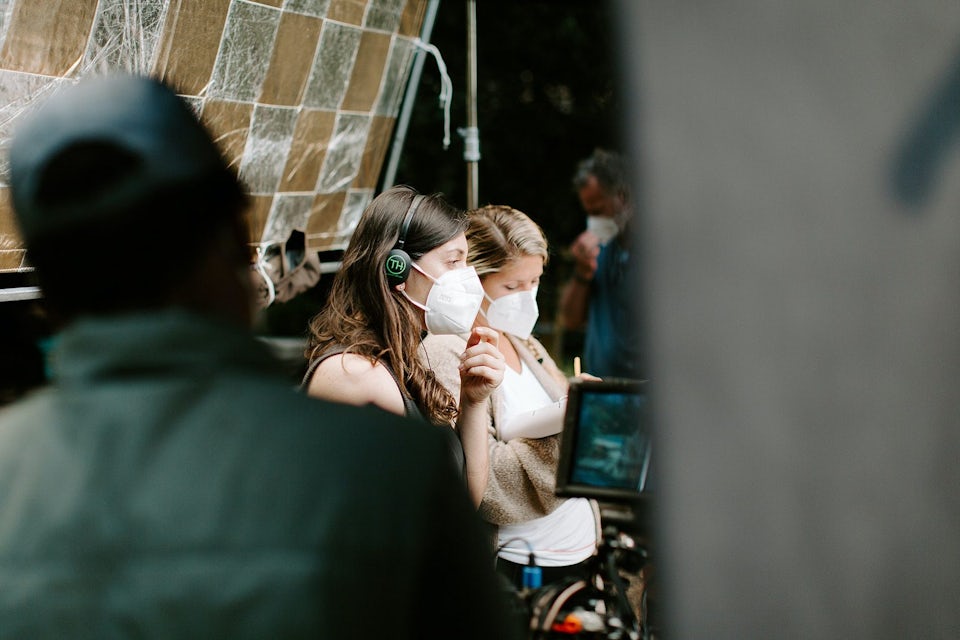
The importance of casting: Your guide to hiring talent
Filmmaking techniques • 11min read
Filmmaking techniques • Written by Ellie Cameron-Krepp, Creative Community Manager
In 2020 when marketing budgets froze and shoots got cancelled, it was pretty clear that working in production was going to be a struggle, and a big one. As stay at home measures rolled out and offices turned to Zoom – things were looking pretty grim for the industry.
Although production is gradually resuming around the world, the way we create content has changed – so to help us and our clients understand the impact of COVID-19 and prepare for what production looks like today, we asked Genero creators to share their experiences.
For our global creative talent survey, we surveyed 430 creatives – including creative directors, producers, directors, production companies, agencies, animators and more – from 61 countries.

We’ve put together a list of the top things we’ve learned below (and also published a full report: ‘The impact of COVID-19 on the global creative industry’) about how production has changed, and where we go from here.
We saw it with our own eyes and via our own platform, and the data backed it up. With lockdowns, restrictions on work and huge numbers of project cancellations, 81% of the creatives we surveyed highlighted that their income had been reduced throughout 2020. The financial impact was significant, too – the most common response (24%) was more than a 70% reduction to income.
“Although I’ve enjoyed the extra time to explore creative projects, the financial impact of losing so much work has been exhausting.” – Photographer 🇦🇺
“90% of my work came from international projects, due to travel restrictions and a general halt on productions, these projects have come to a near full stop.” – Producer 🇧🇪
81% of the creatives we surveyed highlighted that their income had been reduced throughout 2020.
It was no surprise that clients started pausing or canceling their budgets, as everyone tried to figure out just how serious the pandemic would be. However there was one big issue: For production that could go ahead… it suddenly started to cost a lot more. Of the creatives who said that production costs have increased, 83% said that client budgets haven’t been adjusted enough to take these increased costs into account – and in most cases it’s safety measures, restrictions on movement and extended production timelines that have the biggest financial impact.
“The most important factor is to understand the need for increased budgets in order to cover additional costs connected with COVID. Providing good masks for the entire crew, testing and sanitizing stations adds a lot of cost very quickly (not to mention the increase in insurance fees). Many budgets do not take it into consideration hence, there’s a substantial reduction in filmmakers take-home rates.” – Filmmaker 🇵🇱

Image credit: Yunfan Xu
Half of creatives surveyed said that production timelines have increased due to the pandemic. The most common causes have been postponed and rescheduled shoots – but production timelines are also being extended due to factors like safety measures and smaller crews.
“There is an increase in the number of hours needed to make a production happen. While we still get the job done, the client may not realise the additional number of hours taken to coordinate talent, make sure measures are put in place to keep talent safe, find talent that already interact or are related to make them more comfortable with working in close proximity to someone etc.” – Producer 🇯🇲
From hand sanitizer to temperature checks to staggered times on set – it is pretty clear that adjusting projects to meet safety requirements has been one of the biggest (and most expensive) challenges for the creative industry! If you’re looking for more resources, we put together a list of local guidelines for different markets around the world, and shared our go-to safety guidelines to help you to be as safe as possible during production.
Whether you’re lucky enough to be back on set or working towards it, keeping agile is key. All stakeholders need to be flexible to allow for any possible impacts – and we all know that things can change quickly due to COVID-19. The most successful projects were also those with plenty of collaboration – from both the client and creative sides.
“There are creative ways to fix any issue, and to achieve any goal. Be open to working alongside, collaborating and finding new ways to achieve the same thing.” – DOP 🇦🇺

Image credit: ATTIC Film

Image credit: Mackenzie Breeden & Mermaid Toast
For animators, motion designers and post teams, there has been a lot more potential to work from home and keep projects going – but what about everyone else? 15% of creators mentioned that they’ve had to pivot their focus to different production types or roles, or retrain in new fields. Utilizing stock footage, moving into animation and focusing on new types of projects or ways of collaborating was common.
“We’re adapting. Looking into animation more than we were. Using our curated teams interstate more than we were. Relying on our network to complete and deliver our content to our clients.” – Creative Director 🇦🇺
“During lockdown we spent time and energy evaluating new needs and trying to find new ways to adapt for when things could begin again. Since reopening, we have seen a steady increase in production work.” – Producer 🇺🇸
One of the biggest things we learned from the survey, was how many creatives want to move towards freelancing. 72% of creatives had to change their ways of working as a result of the pandemic – and while most of this was temporary, we still found only 11% of respondents would choose full time as their preferred way of working moving forward. Looking forward, most creatives want to freelance (47%) or partner in an independent creative business (35%). It’s a pretty big shift to independent, flexible work – and one we’re excited to help with!

Image credit: Luminoustudios

Image credit: Jakob Owens
The year of Zoom! It isn’t just the creative industry that has rolled out remote working since the pandemic hit – but utilizing online platforms and clever tech is crucial for creating content. As well as platforms like Genero, there were plenty of mentions of Triller, Notion, Slack, Dropbox, Jira and more – with software letting creatives organise, communicate & produce content safely.
“We remotely directed and controlled a shoot with a robot arm and high speed camera from 10km away.” – Creative Director 🇹🇭
“We use a lot of virtual services now and have been working to implement a “virtual” workforce since before the pandemic started. Utilizing cloud-based services helps streamline the process, such as review systems, file delivery, collaborative post-production software, etc.” – Production Company 🇺🇸
As creatives adapt to the challenges of creating content during a pandemic, it is crucial that clients understand the need for collaborative solutions, safety measures and the impact they have on production and budgets – and take these seriously when planning new productions.
“[Clients] need to understand that this is new for everyone. We’re all trying to do the best we can. There should be compassion and patience rather than frustration or annoyance. The pandemic is still happening whether a deadline is coming up or something is overdue!” – Director 🇪🇸
Despite a heartbreaking and devastating experience for so many people around the world – creatives are managing to keep their heads up. Staying creative and keeping eager to produce great content will go a long way – especially as we see client budgets returning to normal – and we hope we can help you with that process
“There are plenty of ways to tell a story. And that often these upheavals offer new solutions. Those that adapt quickly will have a greater chance of success – so be original and brave.” – Creative Director 🇦🇺
“Creative will never die, regardless of the impact or threat. So the creator must be the visionary for the solutions.” – Writer 🇮🇩
To understand these changes in more detail, read our full global creative talent report, which gives a bigger picture on the impacts of the pandemic on production and the creative industry.
Cover image credit: Electric Lime Films.

Filmmaking techniques • 11min read

Filmmaking techniques • 4min read